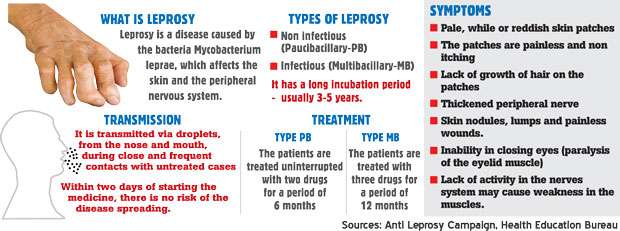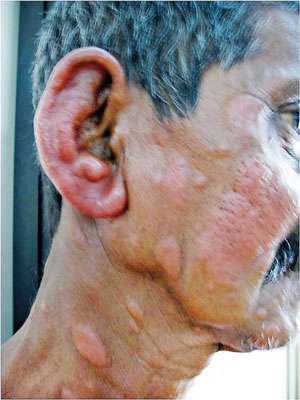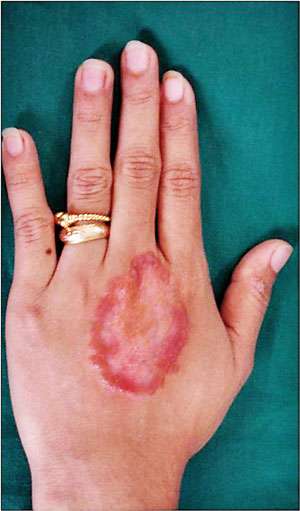Reply To:
Name - Reply Comment

 Leprosy is one of the oldest diseases known to mankind, passing through generations up to modern days and spreading much fear and revulsion in its’ wake. For centuries people believed that Leprosy had the ability to ‘melt away’ the body parts of the affected person. Since they did not have a permanent cure at the time, patients who were diagnosed with leprosy were forced to spend their entire lives in isolation. Even though much has changed during the past few decades regarding the treatment for leprosy, some of the stigma it has carried through centuries still linger. This has negatively affected the spread of awareness about the condition as well, preventing people from seeking treatment and even talking about it.
Leprosy is one of the oldest diseases known to mankind, passing through generations up to modern days and spreading much fear and revulsion in its’ wake. For centuries people believed that Leprosy had the ability to ‘melt away’ the body parts of the affected person. Since they did not have a permanent cure at the time, patients who were diagnosed with leprosy were forced to spend their entire lives in isolation. Even though much has changed during the past few decades regarding the treatment for leprosy, some of the stigma it has carried through centuries still linger. This has negatively affected the spread of awareness about the condition as well, preventing people from seeking treatment and even talking about it.
This week’s the Health Capsule consulted Dr. Januka Galahitiyawa, Consultant Dermatologist, to increase awareness about leprosy among our readers.
Spread of leprosy
“Leprosy is a chronic infection caused by a bacteria called Mycobacterium leprae”, explains Dr. Galahitiyawa, further adding that it can affect the skin and nerves mainly, and in rare instances, the internal organs too.
Leprosy is spread through air, through inhalation of aerosols containing the disease. But unlike a common cough or cold, it does not spread through contact of a patient for a short duration of time. Rather, you have to have prolonged contact with patients. If your immune system is strong, you can live with an untreated leprosy patient for years, yet not have the disease at all. It has a long incubation period varying from 2 to 30 years.
Leprosy is not a single disease entity, but a spectrum of disease presentations. At the lower end of the spectrum is tuberculoid leprosy;where patients present with just a skin patch with or without sensory loss. At the other end of the spectrum is the lepromatous leprosy, which is the much feared presentation with disfigurations. Many of the patients presenting with leprosy have symptoms which put them in between these two extremities of presentations, where we name as borderline tuberculoid or borderline lepromatous.
Tuberculoid leprosy
Tuberculoid leprosy which is the less severe form of the presentation usually occurs in people who have relatively stronger immune systems when compared to other patients having leprosy. They usually present with a skin patch which is lighter in colour than the surrounding skin or of a coppery colour, sometimes with reduced or complete loss of sensations in that area. On examination one may find that they may also have thickened nerves. They have less bacteria in their bodies when compared with patients with lepromatous leprosy, and are therefore less likely to spread the disease.
Lepromatous leprosy
Lepromatous leprosy is the most severe presentation of leprosy and can present with many patches, nodules, loss of sensation in peripheries, numbness as well as disfigurement of the face and ears, and loss of eye brows. They are more common in people with very weak immune systems, and have a larger number of bacteria in their bodies. Therefore they are more likely to spread the disease to the others.
In cases where the infection has persisted for longer periods of time, patients can present with blindness, non healing wounds in hands and feet and rarely, there can be damage to internal organs like kidneys and in men, damage to the testicles. But with early detection and treatment, the number of patients who are having advanced disease has dropped considerably, reassures the doctor.
Some exposed to more risk
People who have weak immune systems like older debilitated people and patients who are having immune-deficient conditions like HIV and diabetes mellitus are at a higher risk when compared to healthy people. Also people who are living in overcrowded spaces also have a higher risk of contracting the illness.
Diagnosis and treatment
Leprosy has many phases, so to speak, and can present in numerous ways, causing patients to seek treatment from a variety of specialties, including dermatologists for skin abnormalities, neurologists for reduced sensation and general physicians for systemic illness presenting as fever, for an example.
“Diagnosis is clinical and is associated with a strong degree of suspicion, explains Dr.Galahitiyawa. The diagnosis can be confirmed with a biopsy of a small piece of skin obtained from the diseased area, or through a smear of bacteria, she further adds. Treatment is through specific antibiotics and anti-inflammatory agents. Depending on the severity of the condition, the duration of treatment can vary from 6 months to one year or more.

Important points about treatment
“The most important point to keep in mind when taking treatment is that it is completely curable when treated correctly. It is crucial to follow the course of treatment until the end even if the symptoms disappear. This is because there is a threat of relapse. This time the disease can appear more vigourously than before, if treatment is stopped halfway. A person who has started treatment for leprosy will stop being infectious just a few days after starting the medication. In patients who are already having complications due to advanced disease, special aids like shoes designed to fit the deformed limbs and splints are available to improve their quality of life.
Treatment is available in dermatology clinics of government hospitals throughout the country and is free. Treatment given falls into the category called ‘outpatient’ except with regard to a few cases and therefore a patient can continue with treatment with minimal affect to day-to-day lives.
Eliminating stigma
Social stigma is one of the biggest issues faced by patients who are suffering from leprosy. Patients are forced to hide the details about their illness in the work place and in schools etc, for the fear of being socially isolated. As we have discussed so far, it is caused by a bacteria, and is completely curable once diagnosed. It does not spread easily from one person to another and as soon as treatment is started, the patient becomes non infectious; just like a healthy person.
Message to readers
Leprosy has remained a somewhat taboo topic in the society, so much so that many people are of the opinion that leprosy is no more. In truth, a considerable number of patients is still diagnosed every day in our country as having leprosy. According to Dr. Galahitiyawa, the disease is more prevalent in the coastal belt; from Hambanthota to Matra, Galle, Colombo and so on, with pockets of disease spread throughout the country.
Therefore, if you are having skin patches which do not go away for weeks to months, which do not cause any symptoms or have reduced or if sensation is absent in the area, it is advisable to visit the nearest skin clinic and get a check. You can also do your part in the fight against leprosy through spreading awareness about the disease and encouraging the society to seek treatment, these efforts will help eliminate the stigma associated with this illness.